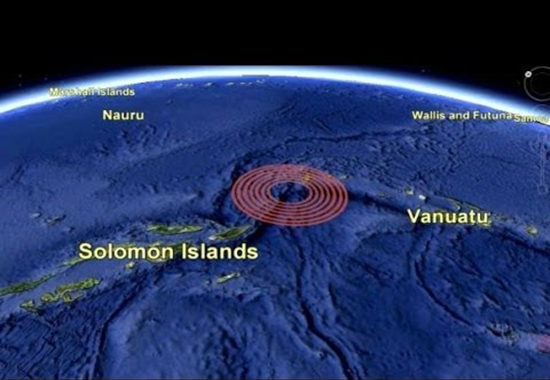
Villagers in Western Province of the Solomon Island fled to higher grounds after a 7.3 magnitude undersea earthquake struck 74 km south-west of Arawa, Bougainville.
The quake struck at 6.50pm, and was strongly felt by most islands in the Western Province. The US Geological Survey reported a 7.6 magnitude quake was centred 100 km south of Kira Kira on the island of Makira at a depth of 29 km.
A tsunami warning for New Zealand was cancelled today following a downgrade of the severity of the quake.
“It was a strong earthquake, we felt it here,” Gizo resident and Solomon islands Broadcasting Corporation broadcaster Sina Adrian said.
“Most people here in Gizo were shaken by the quake. Some started to run here and there,” he added.
“But I have not heard of any damage,” he said.
Despite the powerful earthquake, no tsunami warning was issued for Solomon Islands.
20sec shake
A villager on the nearby island of Parara told the Solomon Star the quake shook for about 20 seconds.
“It started off small, and slowly went stronger,” the resident who asked not to be named said.
“As soon as it stopped, the villagers ran off to higher grounds,” he said.
The 2 April 2006 earthquake and tsunami that struck Western Province are still fresh in the minds of many villagers there.
The disaster claimed more than 50 lives and left behind a trail of destruction.
The Solomon Islands Meteorological Service said no further updates will be issued unless the situation changes.
Source: Solomon Star
This work is licensed under a Creative Commons Attribution-NonCommercial 3.0 New Zealand Licence.




